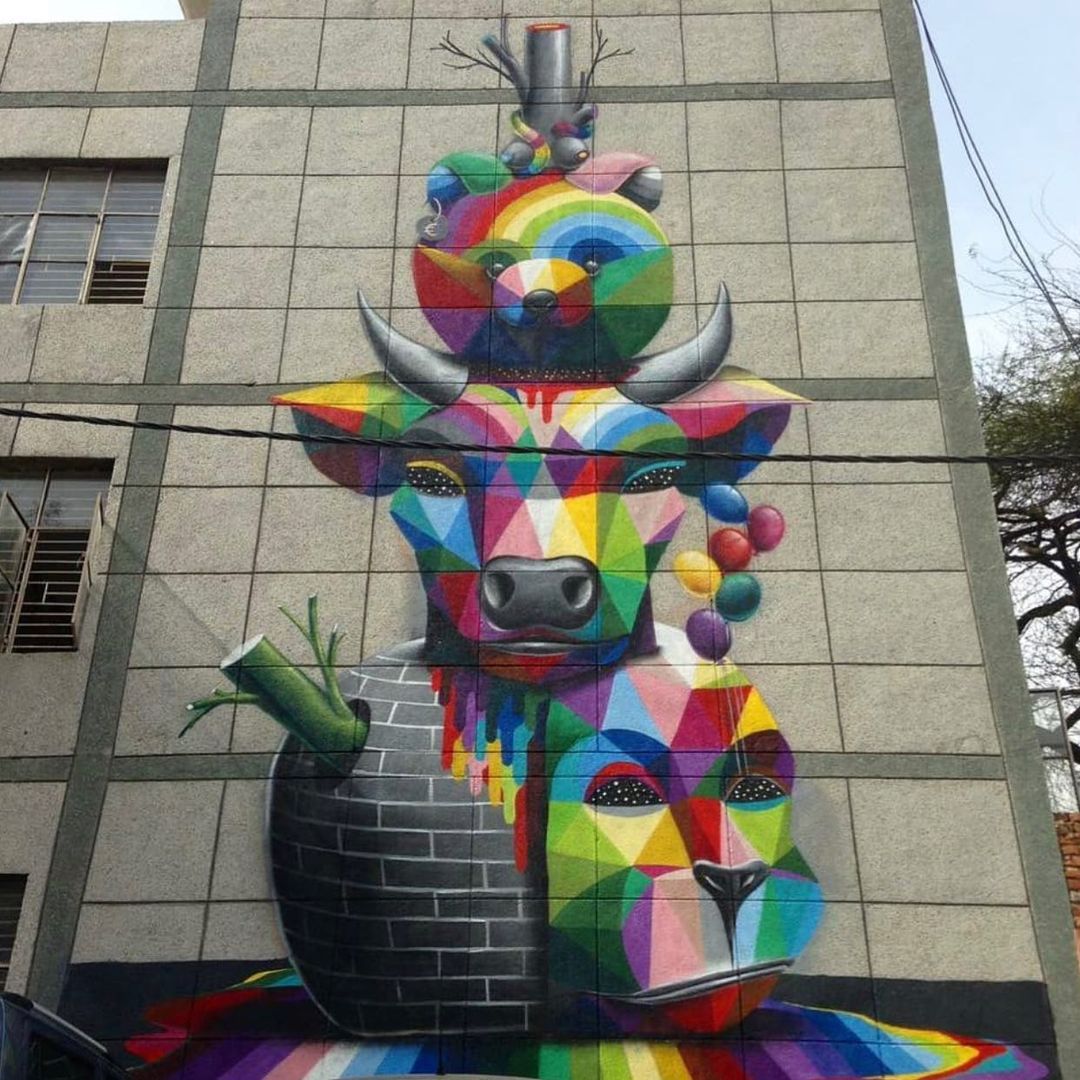
Street art has always been a way to reclaim public spaces, a means of democratizing art and taking it out of galleries and conventional art spaces. The street art scene in India, though, has been growing steadily over the past decade. Collectives like St+art India, Bollywood Art Project, the Fearless Collective, and Aravani Art Project have grown, pushing the boundaries of the genre and making art accessible to wider audiences.

Recently, the street art community in India woke up to the overnight hijacking of some iconic murals in New Delhi and Mumbai. The alcohol brand Budweiser India had painted a portrait of Lionel Messi over the beloved facades. The morning after the incident came to light, St+art India, one of the prominent public art organizations hosting street art festivals in India, called out Budweiser India for painting over two murals commissioned by the company in New Delhi. In an open statement, the organization said: “What used to be some of our earliest murals in Delhi — the ones by @okudart and @stencilcity at Hauz Khas Village — have now been turned into billboards for Budweiser overnight. This is not art. This is blatant advertising in the name of street art.”
This episode enraged the artist community in India, who took to social media to comment on the issue, calling Budweiser’s move unethical. Addressing the backlash, the brand put out a statement saying:
We are deeply concerned that the sentiments of the artists and the street art community have been hurt and we empathize. Our intent was to inspire fans showing the G.O.A.T’s [Messi’s] journey through an artform we love and support. Doing so, we have inadvertently hurt sentiments.
It remains unclear why Budweiser chose to paint over these specific wall, but amends are in place. Budweiser is now approaching the original artists from Bollywood Art Project and St+art India to “restore the works in good faith,” said a statement by the company.

While this “Messi” affair could have been avoided, the uproar against the whitewashing has highlighted the emotional connection between the public and these murals. Ranjit Dahiya, the founder of Bollywood Art Project and the original artist behind one of the murals in Mumbai celebrating yesteryear Bollywood actresses Madhubala and Anarkali, said that he was saddened by the incident. “It’s upsetting because they could have found any other wall,” said Dahiya. “My original mural was meant to revive the city’s cinematic history and Bollywood connection. They painted an advertisement, which people can’t connect with.”

When the Budweiser team approached Ranjit to repaint the mural, he agreed after much deliberation. “I’ve decided to do it because there has to be a solution rather than unresolved anger. As street artists, we’re all still very young, so I advised them to respect the art form and the artists; to learn from this experience and not repeat it again,” he explained. “By repainting a mural dedicated to Bollywood, it’s my way of giving a positive spin on the whole issue and creating an even better homage to the city of Mumbai.”
Hanif Kureshi, co-founder of St+art India, said that Budweiser is also in touch with Okuda and M-City, the original artists for the Hauz Khas murals. He elaborated:
As long as the streets are free, anyone can do what they want. What happened is unfortunate, but it’s highlighted how important these works are to people from all walks of life. When an image is in a public space, it connects emotionally. There are memories attached, and people connect to them because it’s accessible.
The episode has emphasized how subtly street art has become a part of the Indian landscapes and psyche. In a country where there was no concept of street art a decade ago, the art form is now able to bridge gaps and bring communities together to take action and fight for its rightful place in the public domain.
Kureshi concluded, “People are excited that the original artworks are coming back, which is what matters.”
0 Commentaires